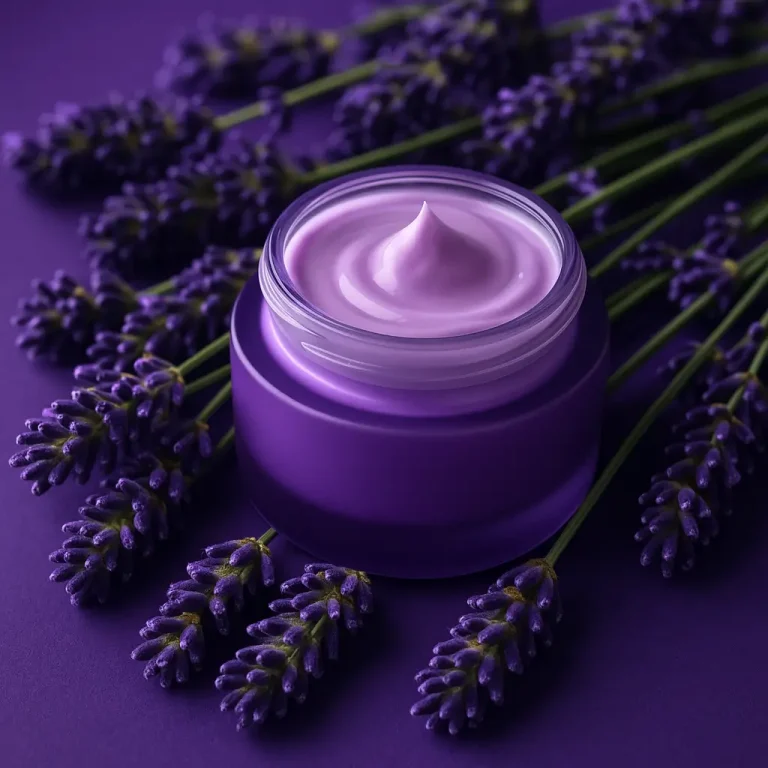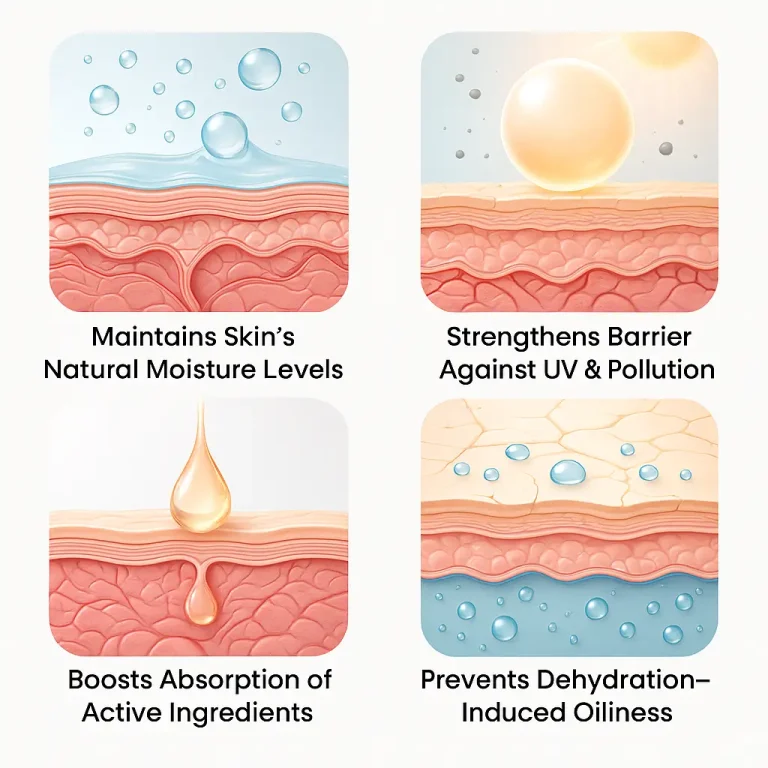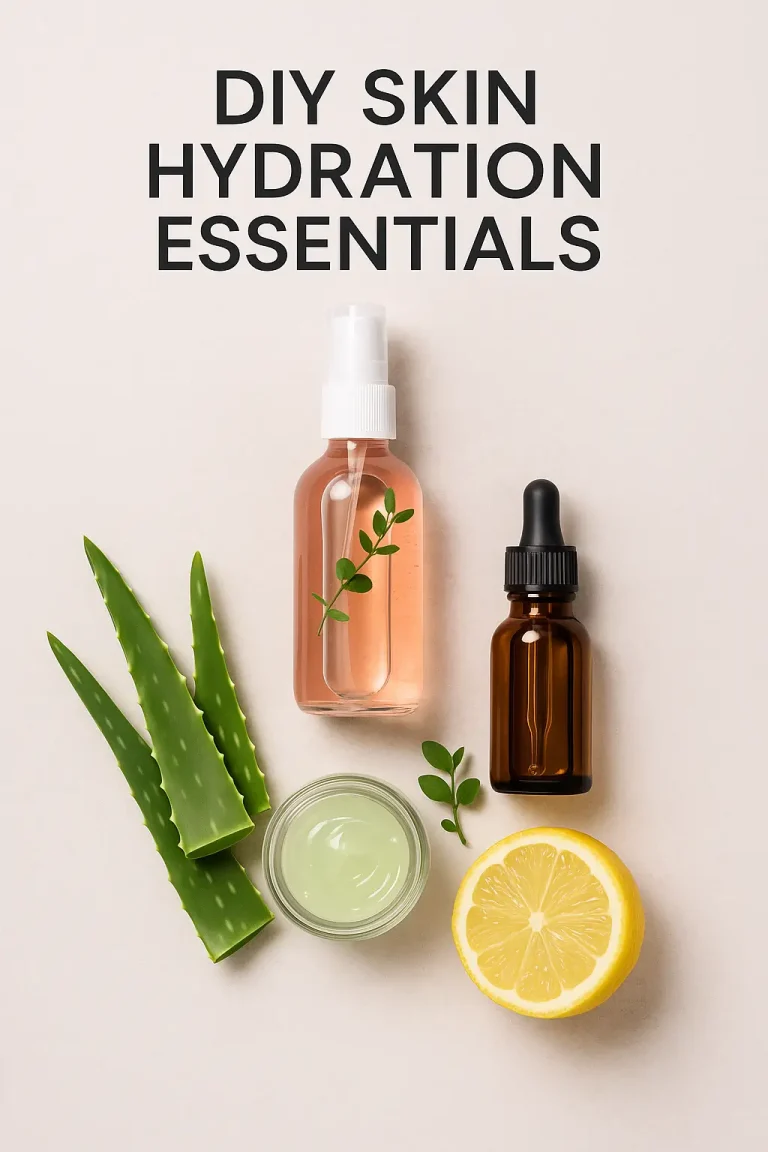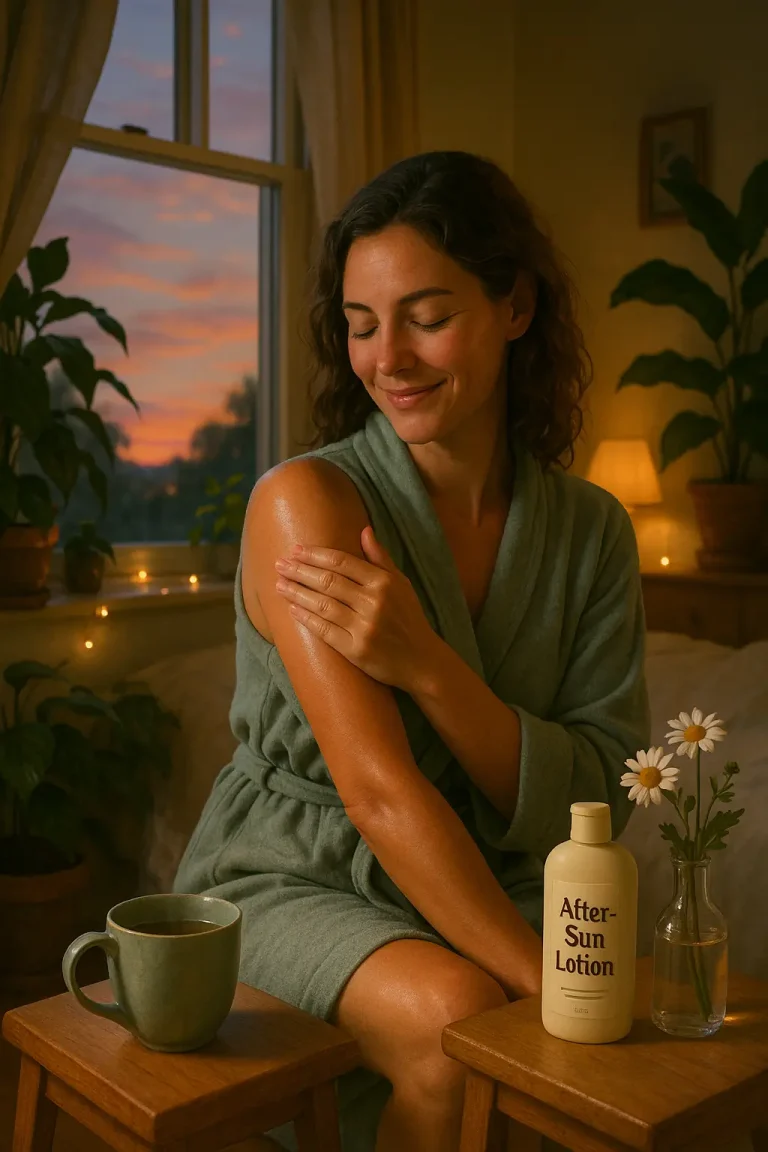What if a single seed could hold the power to color food, heal skin, and protect the body — all while glowing like a drop of captured sunlight?
That seed is urucum (Bixa orellana L.), more widely known as Annatto, achiote, or the lipstick tree. Long before modern science studied its carotenoids and antioxidant properties, Amazonian tribes were already using its brilliant red paste as body paint, folk medicine, and even sun protection (PMC4094728 link).
Today, urucum has stepped far beyond the rainforest. Its seeds are widely used as a natural colorant (E160b) in foods like cheese, margarine, and ice cream, showing not only its cultural value but also its long-standing safety (ScienceDirect, 2019 link). And now, this vibrant plant has found a new role in the beauty world — as a cosmetic ingredient for glowing, resilient, and nourished skin (Silva et al., 2023 PubMed; Rodrigues et al., 2023 PubMed).
By exploring urucum, we uncover not just a spice or dye, but a plant that bridges Latin American traditions, modern cosmetic science, and sustainable beauty practices.
Stay with me — in this full plant profile, we’ll discover urucum’s botanical background, its key active compounds, its skin benefits, and how you can start creating your own infusions at home.
Want to try it right away? Follow my DIY Annatto Oil Recipe and prepare your own carotenoid-rich macerate at home.

What is Urucum (Bixa orellana) – Botanical Background & Plant Characteristics
Imagine a plant whose fruits split open like tiny, spiky hearts, releasing seeds so vividly red they look painted by the sun.
That’s urucum (Bixa orellana L.), a tropical shrub from the Bixaceae family, native to the Amazon rainforest and now thriving across Central and South America and the Caribbean islands. Known as annatto, achiote, or the lipstick tree, it enchants with delicate clusters of pale pink-white flowers and spiky, heart-shaped pods filled with small, waxy seeds.
For centuries, these seeds have been treasured by indigenous Amazonian tribes. They crushed them into a brilliant red paste used as ritual body paint, a protective balm against the sun, and even as a symbol of vitality and beauty. Beyond ritual, urucum also found its way into folk medicine and cuisine: in Latin American kitchens, annatto seeds remain a beloved spice and natural colorant, flavoring sauces, rice, and traditional dishes with their warm, earthy hue.
For us as modern formulators, this background tells a beautiful story: urucum is not just a botanical curiosity, but a living bridge between ancient ritual, daily food traditions, and the skincare innovations we explore today.
Plant Energetics of Urucum
Some plants feel like they carry the sun within them — and urucum is one of those radiant allies.
Energetically, urucum (Bixa orellana) is seen as gently cooling and protective. On the skin, its pigments bring comfort after heat exposure, soothing irritation and calming redness. Unlike harsh actives, its touch feels nurturing — as if it both shields and restores at the same time.
Traditional uses give us deep insight into this energetic profile. For Amazonian tribes, the vivid red paste of crushed seeds was not only body paint, but a powerful symbol of vitality, strength, and protection. Applied before rituals and under the blazing tropical sun, it acted as a natural shield while embodying resilience and connection to the earth. In this way, urucum has long carried both a practical and a spiritual function: to defend the body and to energize the spirit.
Want to dive deeper into the concept of herbal energetics in skincare?
For skincare today, this translates beautifully. Urucum-infused oils or creams feel especially supportive in summer, when skin craves both cooling relief and protective care. It’s the kind of ingredient that doesn’t just work on a cellular level, but also offers a sense of grounding — a reminder of how skincare can nurture both body and soul.

Sustainability & Ethical Harvesting
🌱 A plant as vibrant as urucum shouldn’t come at the cost of the ecosystems it grows in.
While Bixa orellana is widely cultivated across Latin America and the Caribbean islands, its roots lie in the biodiversity-rich Amazon region. This raises an important question: how do we enjoy the benefits of annatto seeds without putting pressure on fragile environments?
The good news is that urucum is relatively easy to cultivate and is not considered endangered. Many communities in Brazil and beyond grow it sustainably, often as part of agroforestry systems that mimic the natural forest. This approach not only protects native species but also provides economic value to indigenous and rural farmers. Brands like Guayapi, for example, source urucum powder through direct partnerships with Amazonian communities, ensuring fair trade and ecological respect (Guayapi).
For home formulators, sustainability means choosing organic seeds or powders from transparent suppliers, avoiding synthetic colorants when a natural colorant like annatto can do the job, and using every batch thoughtfully so nothing goes to waste.
By supporting ethical sourcing, you’re not just nourishing your skin — you’re nourishing entire ecosystems and communities. Next time you buy urucum seeds or powder, take a moment to check where they come from. That choice alone makes your DIY creations part of a larger, more sustainable beauty practice. To deepen your sustainable skincare journey, explore my full sustainable beauty practices guide.
Active Compounds & Their Cosmetic Effects
Behind urucum’s fiery color lies an entire pharmacy of natural molecules designed to protect, soothe, and renew.
The seeds of Bixa orellana are rich in carotenoids, especially bixin (oil-soluble) and norbixin (water-soluble). These pigments don’t just provide the intense red-orange color that makes urucum a valued natural dye — they also function as potent antioxidants, neutralizing free radicals that contribute to premature skin aging (Rodrigues et al., 2023 PubMed).
Alongside carotenoids, urucum seeds contain:
- Tocotrienols (Vitamin E family) → protect lipids in the skin barrier, preventing oxidative stress.
- Phenolic compounds → contribute anti-inflammatory properties, helping calm redness and irritation.
- Fatty acids → nourish and soften, supporting hydration and elasticity (Silva et al., 2023 PubMed).
From a formulation perspective, solubility makes all the difference.
- Oil-based preparations (like macerates or CO₂ extracts) capture bixin and tocotrienols → perfect for facial oils, balms, and serums.
- Water-based preparations (like infusions or glycerites) extract norbixin and phenolics → ideal for gels, toners, or soothing sprays (ScienceDirect, 2019 link).
Proof point: A systematic review confirmed that annatto extract shows multiple biological activities — antioxidant, antimicrobial, and wound-healing — making it not just a traditional ingredient but a pharmaceutical and cosmetic resource (PMC4094728 link).
For us formulators, this means that by choosing the right solvent and method, we can decide whether to emphasize urucum’s coloring power, its antioxidant defense, or its soothing properties — a flexibility that makes it a gem in natural skincare.
Skincare Benefits of Urucum
What if a single seed could brighten, soothe, and protect your skin all at once?
That’s exactly what urucum (Bixa orellana) offers. Thanks to its unique profile of carotenoids, tocotrienols, and phenolic compounds, this tropical treasure brings multiple layers of care into natural formulations.
Here’s what makes it so special:
- Antioxidant Defense → Rich in bixin and norbixin, urucum acts as a shield against free radicals, reducing oxidative stress that accelerates fine lines, wrinkles, and loss of elasticity. A recent PubMed study confirmed its strong antioxidant activity, supporting its use as both a food and cosmetic ingredient (Rodrigues et al., 2023 PubMed).
- Soothing Anti-Inflammatory Properties → Traditionally applied by Amazonian tribes to calm irritation and heal minor wounds, urucum’s compounds reduce redness and swelling. This makes it especially helpful for sensitive or acne-prone skin.
- Natural UV Support → While it should never replace sunscreen, the high carotenoid content provides a gentle, natural layer of sun protection, enhancing resilience against environmental stressors (Silva et al., 2023 PubMed).
- Brightening & Even Skin Tone → Regular use of urucum-infused oils or creams can soften hyperpigmentation and restore radiance, leaving the complexion luminous.
- Deep Nourishment → Its fatty acids restore suppleness, while tocotrienols strengthen the skin barrier for long-lasting hydration.
Relatable proof: Imagine applying a drop of urucum macerated oil after a long summer day outdoors. Your skin feels soothed, glowing with a warm tone — and you know the antioxidant-rich pigments are working behind the scenes to protect and restore.
Want to put these benefits into practice? Try exploring my DIY skincare recipes — you’ll find simple formulations where urucum oil shines as both a cosmetic active and a gentle natural colorant.
DIY Herbal Extracts You Can Make
There’s something magical about watching a golden oil slowly take on the fiery red of urucum seeds.
Making your own urucum extracts at home isn’t just rewarding — it also gives you control over potency, freshness, and sustainability. Depending on the solvent you choose, you can highlight different active compounds and tailor them to your skincare needs.
Here are the most versatile extracts you can create:
- Oil Macerate → By soaking urucum powder or whole seeds in a carrier oil like apricot kernel, jojoba, or sunflower, you extract oil-soluble pigments such as bixin and nourishing fatty acids. Perfect for glowing body oils, balms, or serums. Learn the full process in my step-by-step guide to herbal oil infusion.
- Glycerite → With vegetable glycerin as your solvent, you’ll capture water-soluble carotenoids and phenolic compounds. The result is a gentle, alcohol-free extract you can add to toners, gels, or soothing mists.
- Herbal Tea/Decoction → Though less common for skincare, a warm water infusion of annatto seeds can be used as a base in masks or compresses, especially to calm stressed or overheated skin.
- Alcohol Tincture (less used topically) → This method extracts a broad spectrum of compounds, but is more suited for research or specialized formulations.
Relatable proof: Think of it this way — when you prepare a macerate, you’re essentially “borrowing” the plant’s color and energy into your oil. A few weeks later, you pour out a bottle of glowing red-orange liquid that feels alive with history, culture, and care.
Ready to try your first infusion? Start with a urucum oil macerate — it’s simple, beginner-friendly, and opens the door to endless natural beauty recipes. You can even explore my DIY skincare recipes to see how to weave it into a finished product.
Store-Bought Extracts & Their Use in Formulation
🛒 Not every formulator has the time to wait weeks for a macerate — and that’s where store-bought extracts come in.
If you want to experiment with urucum (annatto) extracts but prefer a faster, standardized option, several preparations are already available on the market. Each offers a different solubility and concentration of actives, meaning you can tailor them to your specific skincare formulation.
- Hydrosol → A gentle water-based extract, ideal for facial toners, soothing mists, or after-sun sprays. It carries mild antioxidant and cooling properties, but without the strong pigmentation of oil extracts.
- Macerated Oil → Many suppliers now offer ready-made urucum macerated oil, usually infused in a carrier like sunflower or jojoba. This option is perfect if you want the benefits of carotenoids and natural pigment without waiting weeks for a DIY maceration. It’s stable, convenient, and can be used directly in facial oils, balms, or body oils.
- CO₂ Extract → A supercritical extraction method that yields a highly concentrated, pigment-rich oil extract. It captures both bixin and tocotrienols, offering intense antioxidant and colorant properties. Science confirms that these CO₂ extracts are especially stable and suitable for cosmetic applications (Rodrigues et al., 2023 PubMed).
Proof point: Cosmetic science literature highlights annatto extracts as widely used natural colorants in both food and beauty formulations — from cheese and margarine to creams, soaps, and lip balms — demonstrating not only their versatility but also their long-standing safety record (PMC4094728 link).
Tip for formulators: Think about solubility before you buy. If your formulation is oil-based (like a balm or serum), a CO₂ extract will give you both pigment and antioxidant activity. If you’re working with a water-based product, a hydrosol will slip right in without emulsification challenges.
How to Use Urucum in Natural Skincare
💡 The beauty of urucum lies in its versatility — it slips seamlessly into everything from silky serums to sun-kissed body oils.
Depending on the type of extract you choose, you can add urucum (annatto) into almost every category of natural skincare:
- Facial Oils & Serums → A few drops of urucum macerated oil add both antioxidant power and a subtle glow. Especially lovely for dry or mature skin that craves nourishment.
- Balms & Creams → Stirring in a CO₂ extract or powdered infusion gives your formulation a warm tone and boosts protective properties.
- Body Oils → Urucum oil is a favorite for shimmering dry oils that enhance the skin’s natural radiance. I share a full recipe in my DIY shimmering body oil.
- Lotions & After-Sun Care → Thanks to its gentle cooling energy, urucum fits beautifully into soothing emulsions for summer skincare.
- Hair & Scalp Treatments → The antioxidant pigments can help protect strands from UV exposure while adding a natural sheen.
Safety & Contraindications
Even the most natural ingredients need mindful use — and urucum is no exception.
The good news is that Bixa orellana (annatto) is considered safe in topical applications and has a long history of being widely used as a spice, natural colorant, and cosmetic pigment. In fact, it is so trusted that it carries the official EU food additive code E160b, meaning it is approved for use in foods such as cheese, margarine, and even ice cream (PMC4094728 link). Its established record in food and pharmaceuticals adds reassurance for its cosmetic applications.
Still, there are a few considerations:
- Skin Sensitivity → While rare, some individuals may develop contact allergies to annatto extract. Patch testing is always recommended.
- Pregnancy & Breastfeeding → No topical concerns are reported, but internal use should be avoided without professional supervision.
- Concentration in Formulations → Cosmetic studies suggest keeping annatto seed extracts at low percentages (typically <1% for CO₂ or concentrated forms) to avoid staining and ensure stability (ScienceDirect, 2019 link).
- Color Transfer → Because of its strong pigment, urucum oil may temporarily tint the skin or clothing if used in high concentrations.
Proof point: According to Silva et al. (2023) PubMed, orellana seeds demonstrate low toxicity and beneficial biological activities, supporting their use in topical care while confirming the importance of dosage control.
In short: urucum is safe and effective when used mindfully. Keep concentrations moderate, test on a small skin patch first, and enjoy its benefits without worry.
Final Thoughts
Few ingredients embody the perfect blend of tradition, science, and beauty the way urucum does.
From its spiky, heart-shaped fruit pods to the vibrant annatto seeds within, this tropical gem has traveled a long path — from the body paints of Amazonian tribes to the shelves of modern formulators. Along the way, it has proven itself as a sustainable, multifunctional cosmetic active, rich in carotenoids, tocotrienols, and soothing properties. Whether you’re looking to brighten, nourish, or simply infuse your creations with a touch of natural color, urucum offers something unique.
What I personally love most is how this ingredient feels like a bridge: it connects us to ancestral rituals, empowers us with modern science, and allows us to create beauty that feels both radiant and responsible. Every time I prepare an urucum macerate, I’m reminded of how skincare can be more than routine — it can be a ritual of connection, care, and creativity.
Now it’s your turn: Would you start with a simple oil macerate, or are you tempted to explore CO₂ extracts in your creams and balms? I’d love to hear how you plan to use urucum in your formulations. Share your thoughts in the comments, or try one of my DIY skincare recipes to experience its glow firsthand.
Until next time — let’s keep creating beauty that nurtures both our skin and the planet. See you in the next post, where I’ll show you how to take this glowing oil infusion and weave it into a finished product.
Kristina






